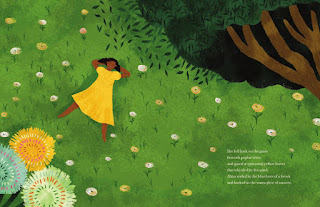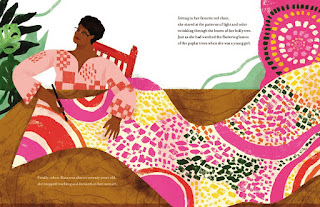Sunday, January 30, 2022
RRR presents... THE HIGHLANDER'S SUBSTITUTE WIFE by Terri Brisbin - SPOTLIGHT!
Friday, January 28, 2022
TCBR AWARENESS TOUR: Finding Family Treasure by K.I. Knight & Jane R. Wood - GUEST POST + GIVEAWAY!
Discussing Diversity and Family in the Classroom
By Jane R. Wood
“Who are we?” a fifth grade teacher asked her class. The students wondered what that had to do with their social studies lesson about the founding of America. They expected to learn about names, dates, and events about their country’s early beginnings. But their teacher knew that was not the whole story. She wanted them to consider another aspect of who we are as a country.
People from different countries and cultures came to America’s shores to start a new life. Many came to escape oppression, to pursue new opportunities, or to seek a better life for themselves and their families. But those early immigrants were not the only ones who came seeking a better life — it also reflects part of America’s population today and defines who we are as a country.
According to the 2020 US Census, the multiracial population of the United States increased by 276% since the 2010 Census. That increase in people from different ethnic and racial backgrounds is also reflected in our schools — and that presents unique challenges for today’s teachers, as well as opportunities.
Teachers need to be sensitive to the diversity that exists within their classrooms. Positive references to different ethnic populations can be included in class discussions. When teachers embrace America’s diversity by teaching history, science, literature, and math with discussions that highlight the contributions made by people from other cultures, it helps make students more open-minded toward others who are different from themselves.
Examples of such contributions that could be shared with students include:
In the 1700s during the colonies’ fight for independence from England, large numbers of soldiers in the Continental Army identified themselves as Irish immigrants or of Irish descent, and more than 6,000 people of color served with the colonial troops.
In the early 1800s, Sacagawea, a Shoshone Native American woman, served as a guide and interpreter for the Lewis and Clark Expedition. She helped the explorers barter for food and other necessary items with other Native Americans, so the expedition could provide valuable information about the newly-purchased territory west of the Mississippi River.
During World War II, the Tuskegee Airmen, a group of Black aviators who flew more than 1,500 missions, provided escorts to bombers, and saved hundreds of American lives.
In 1982, Maya Lin, a famous US architect of Chinese descent, designed the Vietnam Veterans Memorial in Washington DC that honors the soldiers who died in the Vietnam War. The National Park Service says the memorial receives more than three million visitors each year.
In 2009, Sonia Sotomayor, whose parents were born in Puerto Rico, became the first woman of color, first Hispanic, and first Latina member to serve on the United States Supreme Court.
When students hear about the contributions of individuals and groups from other cultures, it can give them a new perspective on that ethnic group. Not only does it break down stereotypes, but it can help create a sense of pride in students who might otherwise feel excluded. Often students from different backgrounds feel like they are not a part of their class, their community, or their country. Teachers need to send a message that being different is not a bad thing.
How teachers can encourage positive attitudes towards others:
Determine the ethnic background for each student in the class so positive references about that culture can be included in class discussions.
Include books, music, and art in the classroom that reflect other cultures.
Acknowledge and celebrate dates and events that are important to the cultures of students within the class.
Create opportunities, like small group activities, for students to interact with students who are different from them.
Ask students to talk to their parents, grandparents, and other relatives to learn about their ancestors and family history.
Give a writing assignment that describes family members, traditions, or events, and then select a few to be shared with the class.
Display a world map in the classroom and ask students to place pins where they have family connections, showing the diversity within the class.
Become a good role model by talking about personal relationships and interactions with people from other backgrounds.
When teachers celebrate diversity in their classrooms, students get a better understanding of who we are as a country, and what role they can play in creating a more inclusive community and country.
Jane R. Wood is a former teacher and author of six juvenile fiction books. Her newest book is Finding Family Treasure which deals with themes of diversity, inclusion, American history, and family history. To learn more about the book, go to www.findingfamilytreasure.com.
Wednesday, January 26, 2022
TCBR AWARENESS TOUR: Ablaze with Color: A Story of Painter Alma Thomas by Jeanne Walker Harvey - REVIEW + GIVEAWAY!
RRR presents... A PLETHORA OF PHANTOMS by Penny Hampson - SPOTLIGHT!
Monday, January 24, 2022
Happy BOOK BIRTHDAY to... THE DATING DILEMMA by Mariah Ankenman - REVIEW!
* Work.
* Don’t think about your birthday tomorrow. Or debt, your crappy apartment, and nonexistent social life.
* Re-stock wine and ice cream because that’s coming.
* Die in a raging blaze of humiliation when the super-hot and very delicious fireman waiting in your office is not in fact the strip-o-gram birthday present you suspected.
* Reschedule the fire safety inspection you 100 percent failed because of said humiliation.
* Figure out how you, in fact, agreed to fake dating Mr. Not a Strip-O-Gram Fireman to help him with a bet.
* Oh yeah, and do not fall for this guy. Seriously, they call him One Night O’Neil. Red flags all over the place.
* Remember, this is fake dating, even though his very talented, very real lips are doing some sexy things you definitely like.
* Realize bending one tiny rule can’t be that bad, can it?
* Except bend too far, and something breaks. Something you can’t get back.






























